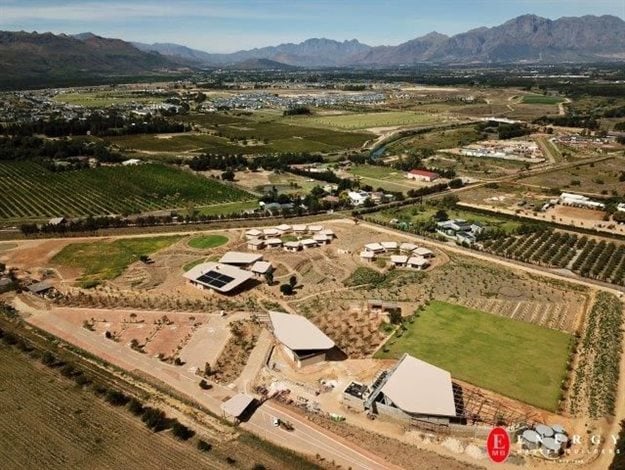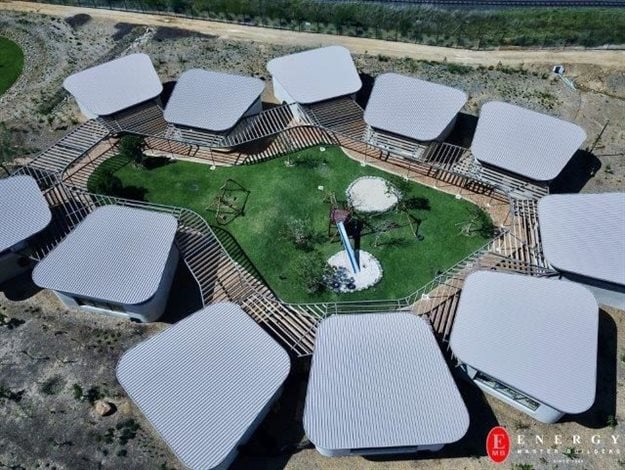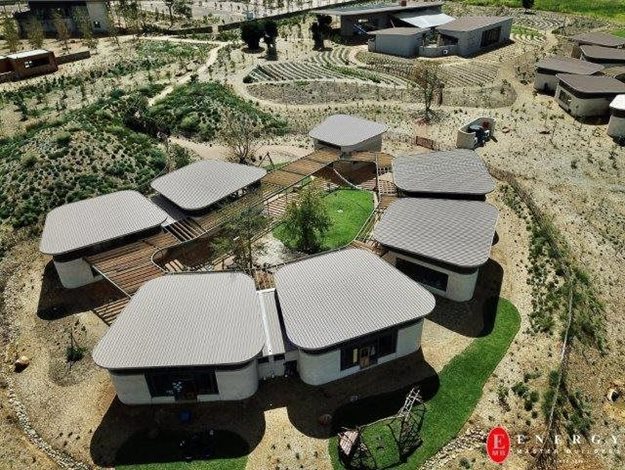
The school is a passion project for its founders, Herman and Alba Brandt, whose children attended Green School Bali in 2017. Their extraordinary educational experience inspired the establishment of Green School South Africa. The personal significance of the project, a school for their own children and children from their community, was a driving force throughout the project.
The family had a personal touch in every aspect, which meant that managing expectations throughout was critical. The Covid-19 pandemic impacted progress significantly, with construction halted on 27 March 2020 and only resuming on-site on 1 June 2020. “This added a full two-month delay to an already congested programme,” reveals Berry.

When the hard lockdown commenced, no one could foresee how long it would be before construction could resume. As time passed, the team became increasingly concerned about the construction timeline, as well as the probable impact of global supply chain constraints on availability and price escalations of all critical materials.
To address these risks, the professional team redesigned many of the buildings to enable reduced construction times (for instance, all classrooms were planned as rammed earth buildings, but in lockdown this was changed to locally manufactured bricks) and tendered and finalised the procurement of all critical materials such as glass, steel, aluminium and the security system, etc.
“We even managed to manufacture the custom-made roof trusses for all of the classrooms during lockdown Level 4, adopting a modular concept to increase on-site efficiency,” adds Berry. Critical decisions also had to be taken on how the school could be operational while still finishing some buildings after it had opened.

Green School South Africa’s mission is to educate for sustainability, so it has an extremely strong focus on sustainability in every component of the school. This includes design, construction and operation, but also extends to the curriculum and the way in which this is taught.
The school opened with an initial intake of 120 learners from kindergarten to Grade 8, and will add a grade so it caters for kindergarten to Grade 12 by 2025. The gross construction area of 2,973m2 consists of 16 classrooms split between kindergarten and primary school, the Sangkep Hall (Balinese for ‘gathering place’) and the Heart of School area, complete with dining hall, kitchen, servery, library, art and music studios and ablution facilities.
Apart from the buildings, extensive landscaping had to be completed, together with a sports field, road network and security fence. From a design and construction perspective, the Living Building Challenge (LBC) was proposed by Terramanzi, the sustainability consultant. The LBC is a rigorous standard that requires a project to be regenerative and not just have a zero-carbon footprint. The fact that the site is situated outside the urban edge and far from public infrastructure services meant it had to generate its own electricity, purify its own water and treat its own wastewater.

Sustainability highlights of the school include:
In addition to the above, all materials were carefully selected to reduce carbon emissions. Feng shui principles were incorporated to harness positive energies within the buildings to harmonise individuals with their surrounding environment. The thermal comfort of learners and educators was very important, with the classroom orientation, heights, roof overhangs and thermally activated building system (TABS) all contributing to create a comfortable indoor environment.

With the different types of material requirements, in addition to personal touches by the client, budgets remained under pressure, so Aecom drove a value engineering process with the architect and interior designer. Basic quantity surveying principles were applied, such as reviewing the efficiency ratios of wall/floor areas, reducing wall heights and oversailing roofs, advising changing materials to meet target savings and reviewing construction areas of the various buildings, etc. “We managed to guide the designers to make practical changes without altering the essence of the design in order to achieve the client’s vision,” highlights Berry.
When Green School South Africa opened its doors on 15 February 2021, the classrooms and Heart of School buildings were complete, the gardens were planted and all infrastructure components were operational. It was almost an impossible project, but showed how collective determination and hard work can change an impossible dream into a beautiful reality, points out Berry. “This project brings diversity to Aecom’s standard public education services. We hope it will be a trailblazer for similar types of private campuses in future.”